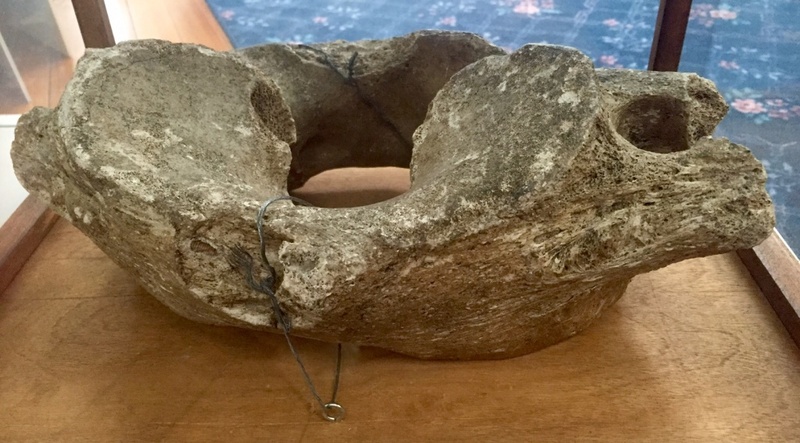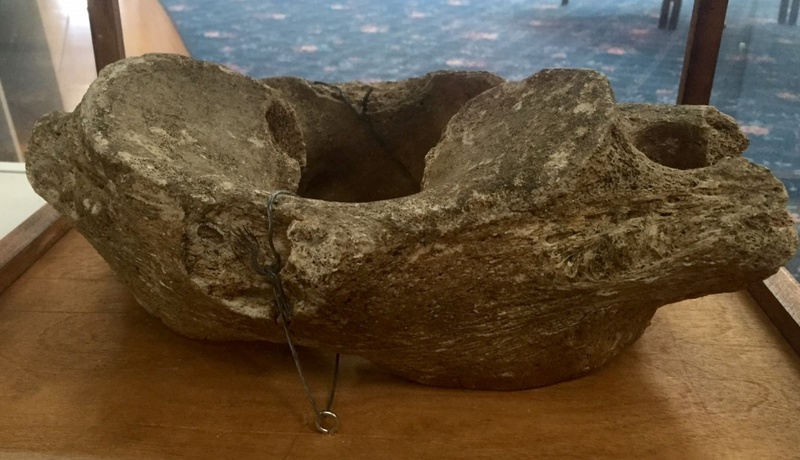Mastodon Vertebra
Dublin Core
Title
Mastodon Vertebra
Alternative Title
Mastodon Vertebra
Subject
Wekiva River (Fla.)
Mastodons--United States
Description
The fossilized vertebra of a mastodon found in the Wekiva River in Florida around 1924. The area around the Wekiva River and springs is now known, through fossils and discovered bones, as a major source for large prehistoric animals such as mastodons, mammoths, rhinoceros, giant sloths, horses and alligators. Mastodons are a distinct species from the Proboscidea order that lived in North America almost 11,000 thousand years ago. The mastodon was a herding animal with a diet consisting of a mix of browsing and grazing diets. They were around seven to ten feet tall and weighed roughly four to six tons. While the exact reason for extinction is unknown, it is widely accepted that mastodons disappeared during the mass extinction known as the Pleistocene megafauna.
Source
Original color digital image, 2015: Museum of Seminole County History, Sanford, Florida.
Date Created
2015
Is Part Of
Museum of Seminole County History, Sanford, Florida.
Seminole County Collection, RICHES of Central Florida.
Format
image/jpg
Extent
137 KB
Medium
1 vertebra
Language
eng
Type
Physical Object
Coverage
Wekiva River, Florida
Accrual Method
Donation
Mediator
History Teacher
Science Teacher
Rights Holder
Copyright to this resource is held by the Museum of Seminole County History and is provided here by RICHES of Central Florida for educational purposes only.
Curator
Fried, Aaron
Cepero, Laura
Digital Collection
Source Repository
External Reference
Robison, Jim, and Bill Belleville. Along the Wekiva River. Charleston, SC: Arcadia Pub, 2009.
Still Image Item Type Metadata
Original Format
2 color digital images
Collection
Citation
“Mastodon Vertebra,” RICHES, accessed December 28, 2025, https://richesmi.cah.ucf.edu/omeka/items/show/5613.

